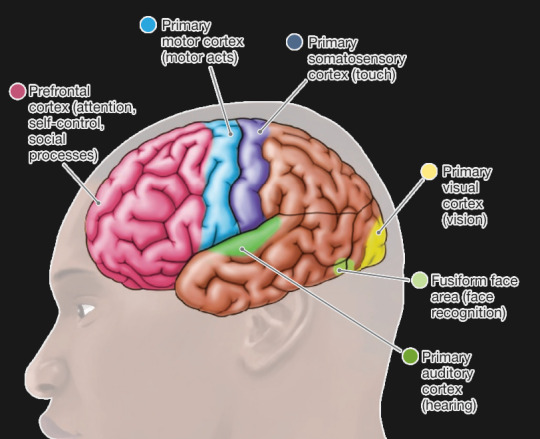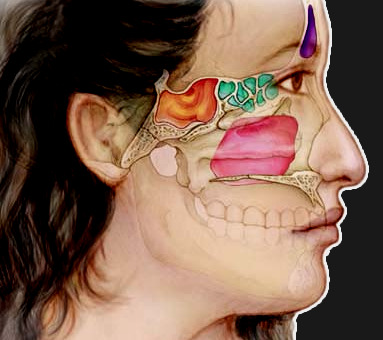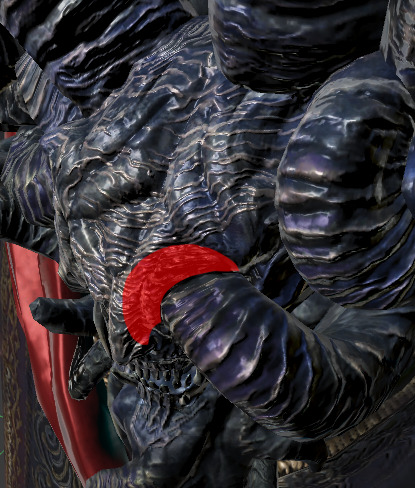#dont @ me about typos istg i spent so long on this
Text
Mohg's Brain
(This is an essay on Mohg, Lord of Blood, from hit video game Elden Ring. It just takes a bit to get there.)


There is a story often repeated in Psychology classes, Physiology classes, pop psych media like YouTube, podcasts, and garbage daytime television on channels that used to be scientifically rigorous: about a man with an incredible brain injury. For those of you who haven't heard the story or are not yet sick of hearing it, I've included it from memory below, because I have heard it just that many times.
If you've heard this story already, you can skip to the subtitle: "Can We Even Learn Anything From Gage?"
If you already know the controversies about Phineas Gage or just want to jump to the part about the video game character, you can skip to the subtitle: "Let's FINALLY talk about Video Game"
----
"The Curious Case of Phineas Gage"

Phineas Gage was a railroad worker who would help clear land with explosives. The dubious and definitely wouldn't-have-been-OSHA-approved method of laying these explosives was to chip a hole into the mountainside, place the explosives, and then tamp it down using some sort of implement like a railroad spike. What happened next was predictable and it's surprising this didn't happen much more often--when packing the explosives, they detonated in Gage's face. Specifically, this launched the spike underneath his left eye and out of the top of his head. Less predictably, Phineas stood up afterwards. When a doctor arrived, said doctor did not believe what had occurred until Gage vomited approximately a "teacupful of brain matter" onto the street.
Due to lack of effective sterilization and antibiotics at the time, poor Phineas Gage was bedridden for several months, where he continued to lose further brain matter to infection. Eventually, he did recover, although he would continue to experience migraines and seizures for the rest of his life. While he lost his job for the railroad service, he went on to work in a sideshow attraction, carrying around the very railroad spike that went through his head. Eventually, he got a job and worked as a taxi driver and lived for several more years before dying of a seizure.
Phineas Gage was never the same after this life-altering injury: he was belligerent, drunk, lied frequently, and lost his job for the railroad company because of his new personality. And I do say NEW personality--Phineas had become like a completely different person and was, in essence, "no longer Gage" (they love quoting that). The damage to regions of the prefrontal cortex made him unable to make moral judgements, and impaired his impulse control.
OR MAYBE THAT LAST PART ISN'T TRUE.
Phineas Gage was NOT much changed by this life-altering injury. Though he lost his job at the railway company, the cause of this job loss is unknown. He MAY have had severe alterations to his personality due to this injury, but whether these changes were due to physical damage or emotional trauma--or whether personality changes ACTUALLY occurred at all--are disputed.
----
Can We Even Learn Anything From Gage?
Though I am uncertain if we have exact data on which parts of his brain he was left with when accounting for what was later lost to infection, the trajectory and angle of the injury suggests he initially lost much of his prefrontal cortex. Which of the previous versions of the story are told or over/under-emphasized is dependent on the point the teller is trying to make in the age-old debate of nature vs. nurture.
Some psychologists argue that Gage's personality change demonstrates the Global Workspace Model, where different parts of the brain are responsible for different parts of consciousness, and that by changing or removing parts of the brain, you change consciousness.
Other psychologists will argue that the LACK of change is evidence of the brain's incredible plasticity--its ability to adapt and compensate for missing parts by shifting the functions of those parts to be performed by different regions.
Most reasonably, he probably experienced some cognitive differences while still being effectively the same person and is an example of both points of view. But we don't have concrete enough evidence to say.
Any class in which a teacher or textbook needs evidence to support whatever point they're trying to make about how changes to the brain affects personality, addiction, emotional regulation, decision making, etc., they'll use Gage to make that point, no matter what stance they take. So really, Gage isn't a useful case study beyond what we could actually observe: he lost some of his brain and lived, while also experiencing migraines and seizures for the rest of his life.
With all of that said, if we assume that Gage experienced no changes to cognitive function or personality, I just typed out a story I am very sick of hearing for no reason. So let's assume that at least some of those observations were true.
----
Let's FINALLY Talk About Video Game


Her are some potentially useful images to reference if you want. Left: general brain regions and their functions. Right: paranasal sinus cavities.
Unlike a nice, straight tamping iron, Mohg's horns curl in unpredictable directions. Some assumptions must be made about length, depth, and diameter to determine what region and volume of his skull is occupied by his horn. The minimum I expect is that the horn occupies the region of his frontal lobe in any scenario. Let's also set a maximum limit: I believe it is reasonable to assume it has not reached the primary motor cortex, where it would disrupt body control and physical movement... unless one wants to suggest he is puppetting himself in his boss fight like a bloodbender. Which, let's be real, IS a really badass concept, someone should write that fanfiction.
Though I argue that Gage is a bad example to use given our lack of reliable data on his personality and lived experiences, we DO know that disrupting the function of the prefrontal cortex can affect judgment, planning, concentration, and any type of higher processing you might call a uniquely 'human' mental ability (I acknowledge the mental abilities of birds and primates but they are beyond the scope of this essay). It may be safe to assume that, in Mohg's case, these mental processes are harmed regardless of any further extrapolation I make. One other brain region of note is the motor speech (Broca) area, located on the left side directly behind the prefrontal cortex and controls muscle movements for speech.
On the topic of pain, migraines, and seizures: He has a horn in his head, it probably hurts. Obstructions (like cysts) can cause buildup of cerebrospinal fluid, which can cause pain and is a common cause of seizures. It is difficult to say how many people have benign brain tumors, but there is speculation that benign tumors in the brain are unexpectedly common. People only typically get brain scans when they've already noticed a problem, but there have been cases of perfectly healthy people having (non-cancerous) brain tumors, so a mass being present in the brain does NOT guarantee seizures will occur. This being said, that horn is significantly larger than a typical benign brain tumor. Migraines and seizures are very reasonable to assume.
I don't know what to say about illness and disease. In theory, if the horn grew at any point after birth, I would say he should have died from any pathogens that were introduced during its corkscrewing into his skull. Phineas Gage was bedridden for months due to infection, was under the care of a doctor, and he wasn't living in a sewer. Do the Lands Between understand the germ theory of disease? It may at least know that poop in the brain is bad, but I listen to Sawbones, so I know that isn't something we can just assume. It's possible he's lost some impossible-to-estimate amount of brain matter to infection. Feel free to speculate about Omen resistance to pathogens, but I don't feel that is the point of this essay. I'll say it's safe to assume his body has healed closed around it, but anything else I won't try to extrapolate.
----
Specificity from Horn Trajectory
Possibility 1:

If we estimate the continued trajectory from the visible part of the horn, it actually continues medially, towards the center of the body, and curls downward. This might even miss most of the brain and instead disrupt the frontal, ethmoidal, and maxillary sinus cavities of the skull.
It may possibly even pierce the roof of the mouth, if we roughly estimate the rate at which the horn tapers and where it likely ends. I argue that this is the most optimistic scenario in terms of his health, because although the horn almost certainly penetrates the prefrontal cortex, it may not be as deep as other possibilities.
In this horn trajectory case, he probably experiences constant sinus pressure similar to a permanent head cold, obstruction to his sense of smell, and by extension his sense of taste. Even if the horn does not completely block his nasal cavity, it may have damaged his olfactory nerve and thus disabled his sense of smell anyway. Should the horn obstruct his mouth he may experience physical difficulties eating and speaking.
Possibility 2:

A worse scenario may be to assume this horn instead extends directly backwards. This would likely pass through the motor speech area, and may have caused him to lose the ability to talk, forcing him to relearn how to speak by having another part of the brain learn to do this function (similar to how anyone learns a second language after very early childhood). It may also reach the LEFT temporal lobe, which processes hearing and smell for the RIGHT side of the body, and therefore he could be deaf in his right ear. Again, the olfactory nerve is potentially in the path of the horn, and loss of sense of smell is frequently considered a symptom of brain damage, so regardless of the angle of the horn this is a high possibility.
----
What Time of Horn Growth Could Tell Us
Children are more likely to recover well from brain damage. The older he was when the horn entered his brain, the more likely he would be to experience cognitive impairment.
Should Mohg's horn have developed that way before birth, his brain may have formed around it without issue, or obstructed regions may have simply remained underdeveloped. His skull would also have developed to more 'comfortably' accommodate this horn, rather than having to break and re-heal around a later intrusion. If the horn is shallow enough and its growth occurred during fetal development or very early childhood before the fusing of the bones in the skull, it is possible that left eye blindness and mild discomfort are the only effects. The timing of the horn's growth being before birth or in early infancy is supported by the Regal Omen Bairn, which shows Morgott with seemingly all of his horns, suggesting that omens horns are largely present upon birth and that those horns grow in proportion with them.
However, given the themes associated with the Formless Mother, here is another--vastly more speculative--hypothesis: Mohg's horn was grown deliberately into his skull by the influence of the Formless Mother, perhaps with or without his consent. I find it hard to believe that a force claimed to be the "mother of truth" which "desires a wound" would be unaware of the possible effects of this type of wound.
I posit that the Formless Mother intended to compromise Mohg's consciousness and sense of reason to make him easier to manipulate. If we assume that they were not working together (debatable), the abduction of Miquella and potential interruption and sabotage of his ascension puts an empyrean under the Formless Mother's control, and works counter to the dynasty Mohg desires. Damage to his ability to plan, make rational decisions, and his sense of morality could explain how Mohg seems to want a place for outcast and hated people, likely seeing a kinship with Miquella, but has created something that is the antithesis to the Haligtree.
Furthermore, should we assume that Mohg and Miquella met previously and Miquella had the opportunity to do so, the power Miquella purportedly has to compel adoration in others may have interacted poorly with Mohg's potentially impaired emotional processing, and could have caused an obsessive outcome that the Formless Mother did not predict.
Of course, I don't believe every awful and cruel decision someone makes is the result of brain damage, but this may explain the incongruity between what Mohg seems to want and what he has made. Whether Mohg is "the reigning lord and hierarch of the coming dynasty of Mohgwyn" or "a raving lunatic" may not be an incompatible dichotomy. It may be sequential.
----
Glassbirdfeather you're so wrong, why did you say ___?
I am not a doctor. I am a chemistry student with a biology lean (clinical laboratory science) and am drawing my conclusions from what I've learned in Anatomy, Physiology, and Psychology classes at an introductory level, and I glanced back at my anatomy and psychology textbooks as my sole academic sources. Please don't take this as a well-researched essay, none of the claims I make about mental or physical health are properly cited. This is just fandom theorizing; it's as academically rigorous as fanfiction. Any doctor/member of the medical profession who would like to correct me is invited to do so, I would love to hear more accurate and informed observations.
----
Bibliography
(literally just 2 references, man)
Grison, Sarah and Michael S. Gazzaniga. Psychology in Your Life. Third Edition, W. W. Norton & Company, 2019.
McKinley, Michael P. and Valerie Dean O'Loughlin. Human Anatomy. Fifth Edition, McGraw-Hill, 2017.
392 notes
·
View notes